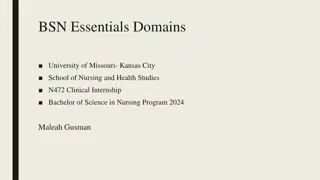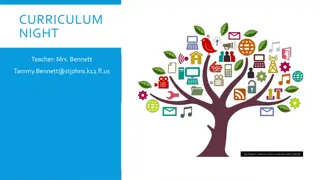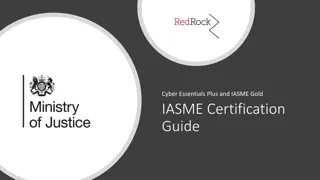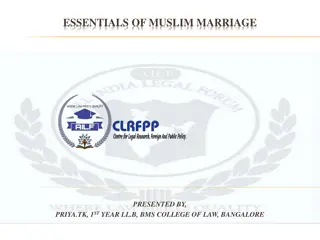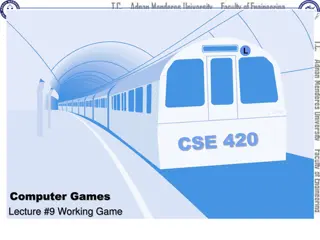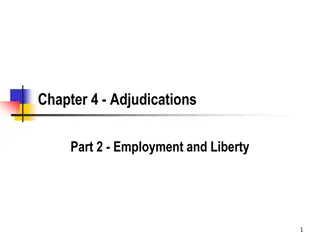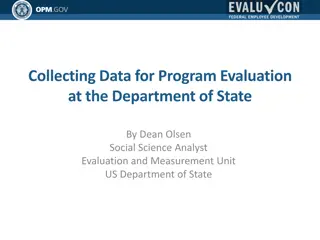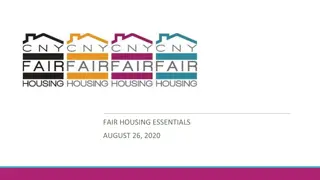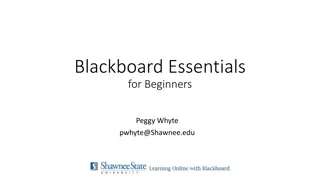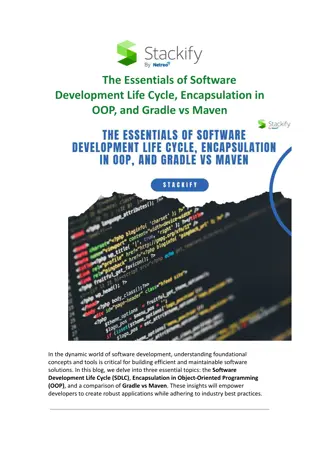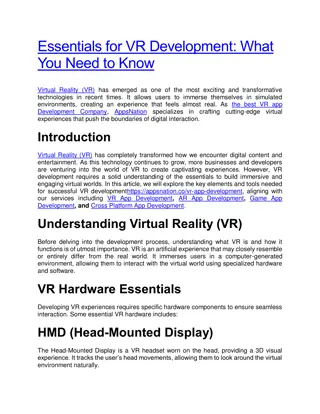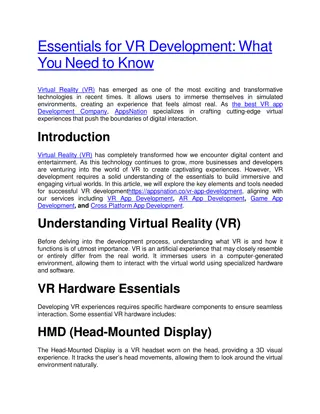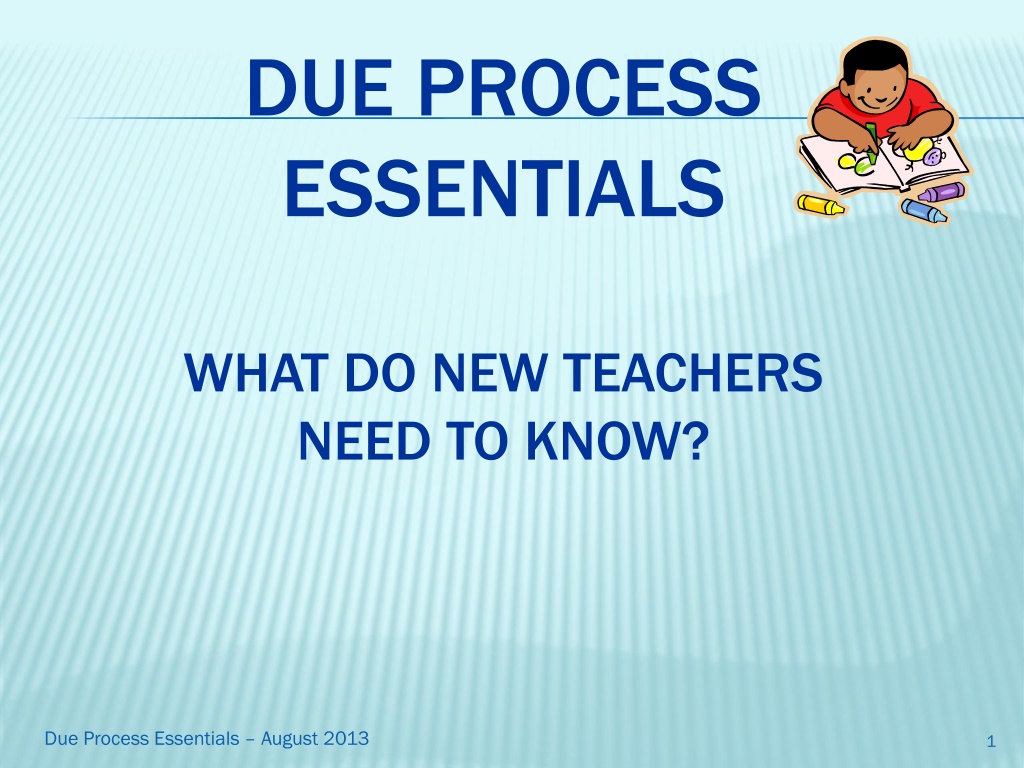
Understanding Due Process Essentials for New Teachers
This comprehensive guide explores the essential components of due process in education, focusing on common problems, upcoming reviews, citations, common errors, frequently asked questions, team member processes, and timelines for new teachers. It provides valuable insights and resources to help new teachers navigate the intricacies of the educational system effectively.
Download Presentation

Please find below an Image/Link to download the presentation.
The content on the website is provided AS IS for your information and personal use only. It may not be sold, licensed, or shared on other websites without obtaining consent from the author. If you encounter any issues during the download, it is possible that the publisher has removed the file from their server.
You are allowed to download the files provided on this website for personal or commercial use, subject to the condition that they are used lawfully. All files are the property of their respective owners.
The content on the website is provided AS IS for your information and personal use only. It may not be sold, licensed, or shared on other websites without obtaining consent from the author.
E N D
Presentation Transcript
DUE PROCESS ESSENTIALS WHAT DO NEW TEACHERS NEED TO KNOW? Due Process Essentials August 2013 1
COMMON IEP PROBLEMS In the 2010-2011 school year MDE completed a compliance review in the district. They found some systemic problems that need to be addressed. We will highlight these issues and other common problems as we go through the presentation today. 2 Due Process Essentials August 2013
UPCOMING MDE REVIEW This year we are responsible to complete a self-review in preparation for an on-site compliance review by MDE scheduled for the 15-16 school year. We are hoping that the problems in the past will not be problems in the future. 3 Due Process Essentials August 2013
CITATIONS AND COMMON ERRORS (MDE CITATION AREAS ARE UNDERLINED) Required Team Members- Excused Absences PLAAFP (Present Level of Academic Achievement and Functional Performance) Goals and objectives Special Education and related services Adaptations/modifications Progress Reviews Annual Review of IEP LRE Prior Written Notice Timelines Due Process Essentials August 2013 4
FREQUENTLY ASKED QUESTIONS In New Teacher Workshop, we talked about available resources. We will be referencing many FAQs and TIP SHEETS as we walk through this presentation. These are stored on the flash drive you were given. Due Process Essentials August 2013 5
PROCESS FOR TEAM MEMBERS When you send out a Team Meeting Notice, make sure you identify each required member. The Team Meeting Notice sign in sheet provides a spot for excusals. See FAQ 3b. Due Process Essentials August 2013 6
TIMELINES FAQ 5 As a case manager, you are the one who is responsible for managing timelines. Let s walk through the FAQ. Link to FAQ Due Process Essentials August 2013 7
TIMELINES It is required that the annual IEP meeting is held on or before the date of the previous annual IEP meeting. If there is a situation that requires more than one meeting, it is the date of the first meeting that is considered the annual IEP meeting date. Example, if the previous IEP meeting was held on 10/1/2012, the team must meet on or before 10/1/2013. Due Process Essentials August 2013 8
TIME FOR A HANDS ON LOOK AT YOUR FILE Individually, review one of your files to determine if all of the components in the Background Information and Dates section of your File Review Checklist. Due Process Essentials August 2013 9
DESCRIPTION OF CHILD: PRESENT LEVEL OF OF ACADEMIC ACHIEVEMENT AND FUNCTIONAL PERFORMANCE AND NEEDS (PLAAFP) Trivia Question: Trivia Question: Before it was PLAAFP- what was it? Answer: Answer: Present Level of Educational Performance (PLEP) Trivia Question: Trivia Question: And before that? Answer: Answer: Present Level of Performance (PLOP) Trivia Question: Trivia Question: How about next year? Answer: Answer: Could be POOP, POP, PEEP Due Process Essentials August 2013 10
DESCRIPTION OF THE CHILD: Red indicates common omissions Should be a description of present level of performance and educational needs Essential Components Statement of how child s disability affects involvement and progress in the general ed. classroom If the child is a preschool student, the PLAAFP must describe how the child s disability affects his or her participation in appropriate activities. Current Current testing/evaluation results This should NOT be a cut and paste of the ESR. Performance on State and District Assessments Due Process Essentials August 2013 11
DESCRIPTION OF THE CHILD Red indicates common omissions Essential Components (cont). Current data on classroom performance including grades Current progress on goals and objectives including growth or lack of from previous IEP. Functional Performance in the school setting Academic, developmental and functional performance Parent and Teacher Comments or concerns All areas of concern addressed including transition for Secondary (we will talk more about secondary later) Educational Needs related to the disability Due Process Essentials August 2013 12
AND INFORMATION ABOUT STANDARDS! The most recent requirement is information about the grade level Standards! You were provided the required information in the Standards Based IEP training on the 24th & 26th of September. Due Process Essentials August 2013 13
COMMON QUESTION Red indicates common omissions Q. Do we have to address every area? A. No and Yes For elementary students- No. You must address every area where there is a special education concern. For High School students- Yes. You must address each of the five areas of transition. Transition must be addressed by the end of grade 9, or following the ESR that addresses transition, and yearly thereafter! For all students K-12 it is necessary to address the Progress and Participation in the General Ed curriculum AND the Functional Performance in the school setting. Due Process Essentials August 2013 14
DESCRIPTION OF CHILD COMMON PROBLEMS PLAAFP does not establish a baseline of information PLAAFP is copy/paste from recent evaluation Inclusion of old evaluation information- in general, evaluation data over a year PLAAFP is the same as last year Educational Needs are not identified No statementof how child s disability affects involvement and progress in the general ed. classroom No statement of the functional skills within the school setting. Due Process Essentials August 2013 15
TIME FOR A HANDS ON LOOK AT YOUR FILE Individually, review one of your files to determine if all of the components in the section of your File Review Checklist on Standards Based IEPs PLAAFP. Due Process Essentials August 2013 16
GOALS/OBJECTIVES FAQ 3F AND 3G Due Process Essentials August 2013 17
GOALS: COMMON PROBLEMS Goals do not flow from need The from/to is vague or not measurable Goal does not identify a clear baseline (% of time or # of trials) Goal covers too broad an area Objectives do not flow from goal Due Process Essentials August 2013 18
WHEN WRITING A GOAL, YOU MUST: Tie it directly to the needs outlined in the description of child You should only have goals where you have attached direct services for that student- do not expect that students do not expect that students will learn the skills without direction will learn the skills without direction There must be a minimum of two objectives for every goal Due Process Essentials August 2013 19
SMART IEP GOALS & OBJECTIVES S Specific M Measurable A Use of Action Words R Realistic and relevant T Time-limited (not to exceed one year) Authors Pete & Pam Wright SMART IEPs Wrightslaw Due Process Essentials August 2013 20
WHEN WRITING A GOAL, YOU MUST INCLUDE: Direction of change Maintain Increase Decrease Skill/behavior to be changed Present level (from) Expected ending level (to) Due Process Essentials August 2013 21
WHERE DO WE GO WRONG WITH GOALS? Not clear Is not measurable Does not have to or from Does not define the student s skill or behavior Is too broad Due Process Essentials August 2013 22
DOES THE GOAL PASS THE STRANGER TEST? The stranger test refers to goals and objectives for students that are described in a fashion that a person unfamiliar with the student could read the description and understand it. If someone does not know the student or the typical behavior, will they know what the goal is- just by reading it? Due Process Essentials August 2013 23
BUT- WHAT ABOUT A STUDENT WHO WILL BE WORKING ON A WIDE RANGE OF SKILLS Write more goals- don t try to put them all in one or Instead of determining the end level of accuracy- phrase the goal in terms of the need for support for example Student will progress from requiring physical assistance when . to requiring only verbal cuing. Due Process Essentials August 2013 24
OR TRY USING A RUBRIC Consider this goal: Student will improve paragraph writing skills progressing from a paragraph with unclear supporting detail with little organization or facts and incomplete sentence structure with multiple grammatical and spelling errors to writing a paragraph with organized details and supporting facts and with well constructed sentences with no errors in grammar or spelling. When you read this it can be confusing, even though it meets criteria. Due Process Essentials August 2013 25
In a case like this, adding the rubric to the IEP may be helpful in defining the goal. Due Process Essentials August 2013 26
IF YOU USE THE RUBRIC THE GOAL MIGHT READ The student will improve paragraph writing skills progressing from a level considered basic or below standards on the attached rubric to a proficient or outstanding level in all five of the subareas. Due Process Essentials August 2013 27
QUICK REVIEW: WHEN WRITING OBJECTIVES, YOU MUST INCLUDE THE FOLLOWING: Conditions for evaluation Skill/behavior to be performed Evaluation criteria and procedures for attainment Due Process Essentials August 2013 28
EXAMPLES (CONDITIONS, SKILL, EVALUATION EVALUATION) Given an object priced under $25.00, Student will combine coins and bills to pay for the object with75% accuracy 3 out of 4 trials as measured by special education staff. After reading a story or article from instructional level material, Student will complete an outline which includes the topic, main ideas and details 2 out of 3 times, evaluated by completion of graphic organizers. Given an assignment and classroom work time, Student will begin working on the assignment within two minutes and will work steadily during work time 80% of the time as measured by teacher documentation. Due Process Essentials August 2013 29
TIME FOR A HANDS ON LOOK AT YOUR FILE Individually, review one of your files to determine if all of the components in the section of your File Review Checklist on Goals and Objectives. Due Process Essentials August 2013 30
DETERMINING PROGRESS Due Process Essentials August 2013 31
HOW OFTEN DO YOU NEED TO COLLECT DATA? Due Process Essentials August 2013 32
Adaptations, Services, LRE Due Process Essentials August 2013 33
ADAPTATIONS -ACCOMMODATIONS Accommodations DO NOT alter or lower performance standards or instructional expectations. Examples of Accommodations teaching strategies test presentation and location timing scheduling student responses environmental structuring Due Process Essentials August 2013 34
ADAPTATIONS = MODIFICATIONS Modifications DO alter or lower performance standards or expectations. Examples of Modifications significantly altered materials modified curriculum modified rigor/standards alternate assessment alternative grading system Due Process Essentials August 2013 35
ADAPTATIONS SHOULD INCLUDE: General changes in instructional delivery Accommodations or modifications to curriculum Alternate curriculum Special instructional strategies Roles/responsibilities of Paraeducators Define what tasks or personal cares the paraeducator does for the student (3rd Party Billing) Equipment needed by student Assistive Technology needed by student Any specialized training required by staff Due Process Essentials August 2013 36
ADAPTATIONS- COMMON PROBLEMS Do not address a student s identified needs Use terms like may Appear to be a laundry list of good to haves rather than needs related to the disability. Due Process Essentials August 2013 37
ADAPTATIONS/MODIFICATIONS Use calculator? if the student does not have concerns in the area of math- why would we allow him to use a calculator? If we allow all students to use calculators- why would we put it in the IEP? Tests read? If the student does not have a reading disability, why would we allow him to have tests read? Due Process Essentials August 2013 38
ADAPTATIONS/MODIFICATIONS Shortened Assignments? if the student does not have concerns with completing assignments in a timely manner, or if he does not struggle with assignments, why would we have this adaptation? Will need test read? Why would we read the test? If the student asks, if it is new material, if student is exhibiting signs of frustration? Due Process Essentials August 2013 39
ACCOMMODATIONS FOR STATE TESTING Please remember that you may not determine the need for an accommodation on State Testing if that accommodation is not used for that student at other times. Due Process Essentials August 2013 40
SPECIAL EDUCATION SERVICES Services reflect identified needs Service areas are specific Reading Communication Behavior Support Minutes are specific Direct and Indirect minutes are defined Due Process Essentials August 2013 41
PARA-EDUCATOR SERVICES The para-educator roles and responsibilities must be identified. If the student is eligible for third party billing in this area, the roles must be identified quite specifically in the adaptation area. Due Process Essentials August 2013 42
READ MY LIPS: NO 1-1! Please remember that we do not use the wording Please remember that we do not use the wording 1:1 1:1 para para- -educator. Parents understand this to educator. Parents understand this to mean that one adult is with the child at all times mean that one adult is with the child at all times and works only with this child. and works only with this child. Other ways to describe this are to say Other ways to describe this are to say Student needs to be monitored by an adult at all times Student needs to be monitored by an adult at all times for safety for safety Student needs adult support in general education Student needs adult support in general education classes classes Due Process Essentials August 2013 43
LEAST RESTRICTIVE ENVIRONMENT If a student is not able to participate full time with students without disabilities in the regular classroom and in extra-curricular and non- academic activities, provide a statement explaining the extent of non-participation and identify why the student s instructional needs cannot be met in the general education setting. The LRE must also identify what the student will be missing from the general education setting when he/she is pulled out. See your tip sheet for some examples. Due Process Essentials August 2013 44
LRE COMMON PROBLEMS Services do not match when the student is not participating in the regular ed. setting. Most commonly, staff have forgotten to identify pull out speech services Due Process Essentials August 2013 45
TIME FOR A HANDS ON LOOK AT YOUR FILE Individually, review one of your files to determine if all of the components in the section of your File Review Checklist on Accommodations and Miscellaneous. Due Process Essentials August 2013 46
WRITING EFFEC TIVE IEP S TO INTERNAL C ONSISTENC Y Due Process Essentials August 2013 47
INTERNAL CONSISTENCY Essentially means that the parts of the IEP work together to paint a picture of the child and their educational program. An IEP with internal consistency will flow from one area to another, building upon the previous area. As we briefly review the sections of the IEP- think about how one section builds on the previous. Due Process Essentials August 2013 48
INTERNAL CONSISTENCY The Description of Child section must set the stage by providing information on what the student is doing now. It is the first of our building blocks for internal consistency: _____ Strengths _____ Needs related to disability (this is the building block for goals/objectives and accommodations) _____ Parent concerns Due Process Essentials August 2013 49
INTERNAL CONSISTENCY As you address: How the student s disability affect progress in the general education curriculum- Think about the adaptations that will be needed. How the PLAAFP establish a baseline of information about the student- Remember that this should lead you right to the from part of the goal. Due Process Essentials August 2013 50

